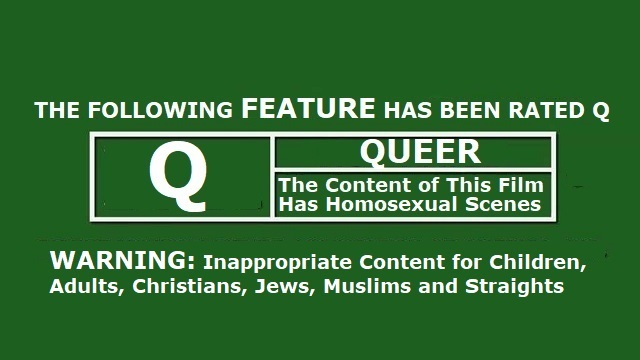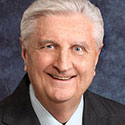Is it time for the Motion Picture Association of America to Add a “Q” Rating?
By Dr. Rich Swier

There is a growing concern, which has turned into a national movement, to warn parents about efforts to groom their children in public school classrooms, public school media centers, by corporations like Disney, Amazon, and Apple and other publishers and distributors of books, films and TV programs.
Add to this the calls to expose misinformation, disinformation and mal-information. We are witnessing a perfect storm to expose untruths and myths in every media format.
History of Movie Censorship
In 1907 Chicago became the first city to regulate and censor movies. The United States Supreme Court upheld Chicago’s right to do this. In 1909, New York City, by order of Mayor George B. McClellan, closed 550 theaters because the police chief claimed that “most movie material was reprehensible.” A 1915 United States Supreme Court landmark decision firmly established that censorship could be applied to film.
The MPAA was founded as the Motion Picture Producers and Distributors of America (MPPDA) in 1922 as a trade association of member motion picture companies. At its founding, MPPDA member companies produced approximately 70 to 80 percent of the films made in the United States. In 1930, the MPPDA set up the Motion Picture Production Code (also known as the Hays Code). It didn’t wield any real power until it joined forces with the Legion of Decency, an organization created by the Catholic Church (as well as other religious organizations) dedicated to combating “objectionable material.” From that point forward, the MPPDA would only approve films that had the Catholic Church’s seal of approval. The Legion of Decency would also assign ratings to the approved films.
The MPPDA became the MPAA
In 1968 the Motion Picture Association of America (MPAA) established a system of movie ratings for parents to use as a guide to determine the appropriateness of a film’s content for children and teenagers. The ratings system is voluntary, and there is no legal requirement that filmmakers submit their films for rating.
In 1968 the MPAA set up a rating board that classified films as G, M, R, and X. After various changes the MPA ratings are now as follows:
- G, for general audiences;
- PG, parental guidance suggested;
- PG-13, parents strongly cautioned, because film contains material inappropriate for children under 13;
- R, restricted to adults and to children under 17 accompanied by parent or guardian;
- and NC-17, no children under 17 admitted.
X-rated films are now considered pornography.
Should the MPAA add a “Q” to each of its ratings?
The use of and promotion of LGBTQ+ characters has grown since the release of the film The Best Man (1964), where a character, played by Shelley Berman, is accused of being homosexual. This was the first American film to use the word “homosexual”. Brock Peters played one of the first expressly homosexual characters in an American film in The Pawnbroker in 1964.
Since 1964 there have been a growing number of homosexual characters introduced into films by all of the studios, from Disney, to Marvel, to Sony. Some studios like Disney have made it their goal to increase the number of homosexual characters in films and cartoons. This includes online streaming services who produce films such as Netflix, HBOMax, Hulu, Amazon Prime and others.
Given the growing concern by parents, healthcare professionals, psychologists, psychiatrists, politicians and the general public, we suggest it is time that the MPAA add a new rating. This rating is “Q.”
This is not a stand alone rating but rather a rating added to the current ratings of films as follows:
- G-Q, for general audiences;
- PG-Q, parental guidance suggested;
- PG-13-Q, parents strongly cautioned, because film contains material inappropriate for children under 13;
- R-Q, restricted to adults and to children under 17 accompanied by parent or guardian;
- and NC-17-Q, no children under 17 admitted.
We also suggest that we have a rating of X-Q.
The Bottom Line
We recently went to see the Disney Studios and Marvel film Doctor Strange in the Multiverse of Madness. The film was rated PG. One of the scenes is of the parents of the Marvel character America Chavez played by Xochitl Gomez. America Chavez’s parents are two lesbians.
After seeing the film we learned that Zara Phythian, the martial arts stuntperson and actress who appeared in 2016’s Doctor Strange, and her husband, had been sentenced to eight years of prison after being found guilty of sexually abusing a 15-year-old girl.
We also watched as a Corporate President Karey Burke of Disney, Inc. declare that she was determined to have 50% of Disney characters be homosexuals. Watch:
SCOOP: Disney corporate president Karey Burke says, “as the mother [of] one transgender child and one pansexual child,” she supports having “many, many, many LGBTQIA characters in our stories” and wants a minimum of 50 percent of characters to be LGBTQIA and racial minorities. pic.twitter.com/oFRUiuu9JG
— Christopher F. Rufo ⚔️ (@realchrisrufo) March 29, 2022
Disney, Inc. alone owns the following franchises:
- ABC
- ESPN (80% stake)
- Touchstone Pictures
- Marvel
- Lucasfilm
- A&E (50% equity holding with Hearst Corporation)
- The History Channel (50% equity holding with Hearst Corporation)
- Lifetime (50% equity holding with Hearst Corporation)
- Pixar
- Hollywood Records
- Vice Media (10% stake)
- Core Publishing
It is past time for movie goers to understand what is in each film whether viewed in theatres or via online streaming services or on television.
Knowledge is power. Knowing before one goes to see a movie should be an individual choice but that choice must be based upon the truth of what the film contains. If the film contains any LGBTQ+ character or promotion of the LGBTQ+ agenda then it is up to the buyer to beware.
In the eyes of many Americans what is on the silver screen today is “reprehensible.”
Better safe than sorry by warning movie goers of “objectionable material.”
©Dr. Rich Swier. All rights reserved.
RELATED ARTICLES:
Disney Corporate President Karey Burke Says Next Generation ‘Queerer, so Disney better get with it.’
Four Disney Employees Arrested in Human Trafficking Operation
Murder Suspect And Alleged Sexual Molester ‘Transitions’ To Female In NYC Jail
Homosexuality: The countries where it is illegal to be gay
RELATED VIDEO: Who Invented the Movie Rating System?

This article is courtesy of DrRichSwier.com, an online community of citizen journalists, academics, subject matter experts, and activists to express the principles of limited government and personal liberty to the public, to policy makers, and to political activists. Please visit DrRichSwier.com for more great content.

